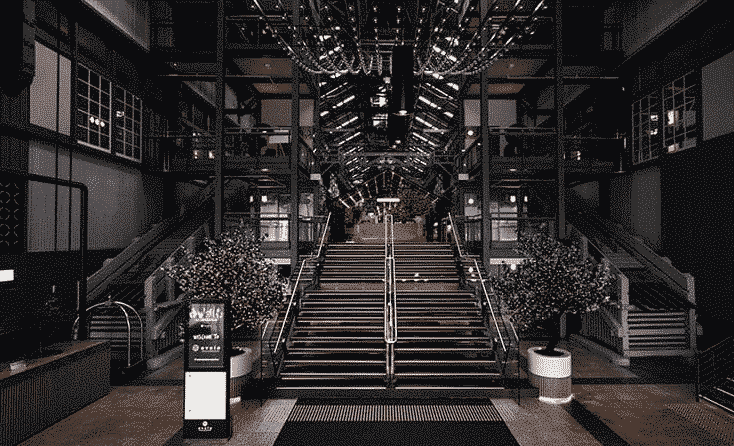Ovolo Woolloomooloo – A Building History for Historic Hotels

To fully appreciate the Ovolo Woolloomooloo, a stunning, grand hotel, and its place among the city of Sydney’s historic hotels, let’s journey back in time.
Built by the Sydney Harbour Trust on the site of Sydney’s very first fish market, the Woolloomooloo Finger Wharf appeared during the era of extensive finger wharf building. Commencing in 1910, the jetty took 3 years to build, at a length of 410m and a width of 64m. In the years that followed, a 30m extension was added and shed construction continued into the early 1920s, when it officially became one of the major wool dispatch points and the terminal for the larger ships entering Sydney Harbour. During the World Wars, the wharf was an embarkation point for soldiers, who were deployed on board converted passenger liners to Egypt and Gallipoli. In 1956, Shed No.7 was upgraded to a passenger terminal, serving as one of the first contact points for hopeful immigrants bringing their skills, culture, and families to start new lives in Australia. It’s a colourful history for what would become one of the top historic hotels in the Sydney CBD area, and an impressive hotel spa to put all others to envy.
By the 1970s, new container ports with larger wharfing facilities and cruise liner terminals around Sydney Harbour saw a decline in wharf usage. With the wharf laying derelict and falling into disrepair by the late 80s, the New South Wales Government were going to demolish it, in favour of a new marina and resort. This led to one of the wharf’s most famous incidents in January 1991. As demolition work began, a mass of local citizens blocked the entrance to the site and a host of public meetings were held, which eventually led to a Green Ban being imposed by the unions. Demolition stopped and members of the public successfully lobbied for other uses for the site. The future of one of the city’s best loved historic hotels was saved.
Prior to its status among the most popular historic hotels and a lavish hotel spa, for the rest of the 20th century it remained an operational wharf, primarily handling the export of wool. Yet just before the Olympic Games in 2000, the NSW Government leased the wharf to a private joint venture, who completed a $300m makeover of the wharf, creating 300 apartments, a hotel and a marina. The vast array of bars and restaurants along the wharf have become some of Sydney’s most famous dining spots.
When Ovolo purchased the grand hotel in 2015, there was a fantastic opportunity to reimagine the 100-year-old heritage listed Finger Wharf building in a way that carefully retained core elements of the historic hotels’ history, while adding an injection of life to the precinct. A young, energetic, boutique, and accessible space with bright colour schemes and an abundance of decorative light throughout the expansive public spaces, the grand hotel has been brought to life under the umbrella of its original building structure – industrial chic with a fashionable edge. It’s one of the most original historic hotels you’ll ever see. The interior styling compliments the building’s original exposed wooden beams and timber floors, using playful, bright and unusual furnishings accentuated by unique Australian and international artwork. In this grand hotel, an 86kg clock by Swedish design studio, Humans, is a feature piece containing128 individual clock-faces which combine to form one large clock, displaying a variety of kinetic art formations, and of course, the time!
The wharf itself remains of great cultural significance for its rarity, scale, construction methods, artefacts, and the diverse history of uses and events it holds. Ranked as one of the top historic hotels, the building still retains its authenticity and contains rare industrial equipment including the only electrically-operated goods conveyors in New South Wales and three of the oldest operating electric lifts in Sydney. This magnificent, grand hotel remains a symbol of the important and historic role that Woolloomooloo played in both Australia’s wool industry during the 20th century and our country’s commitment in both World Wars. It’s quite simply one of the must-see historic hotels in this part of the world.
Book a room directly at our award winning Ovolo Hotel Woolloomooloo. Contact us daily, Mon Tue Wed Thur Fri and all weekend.
